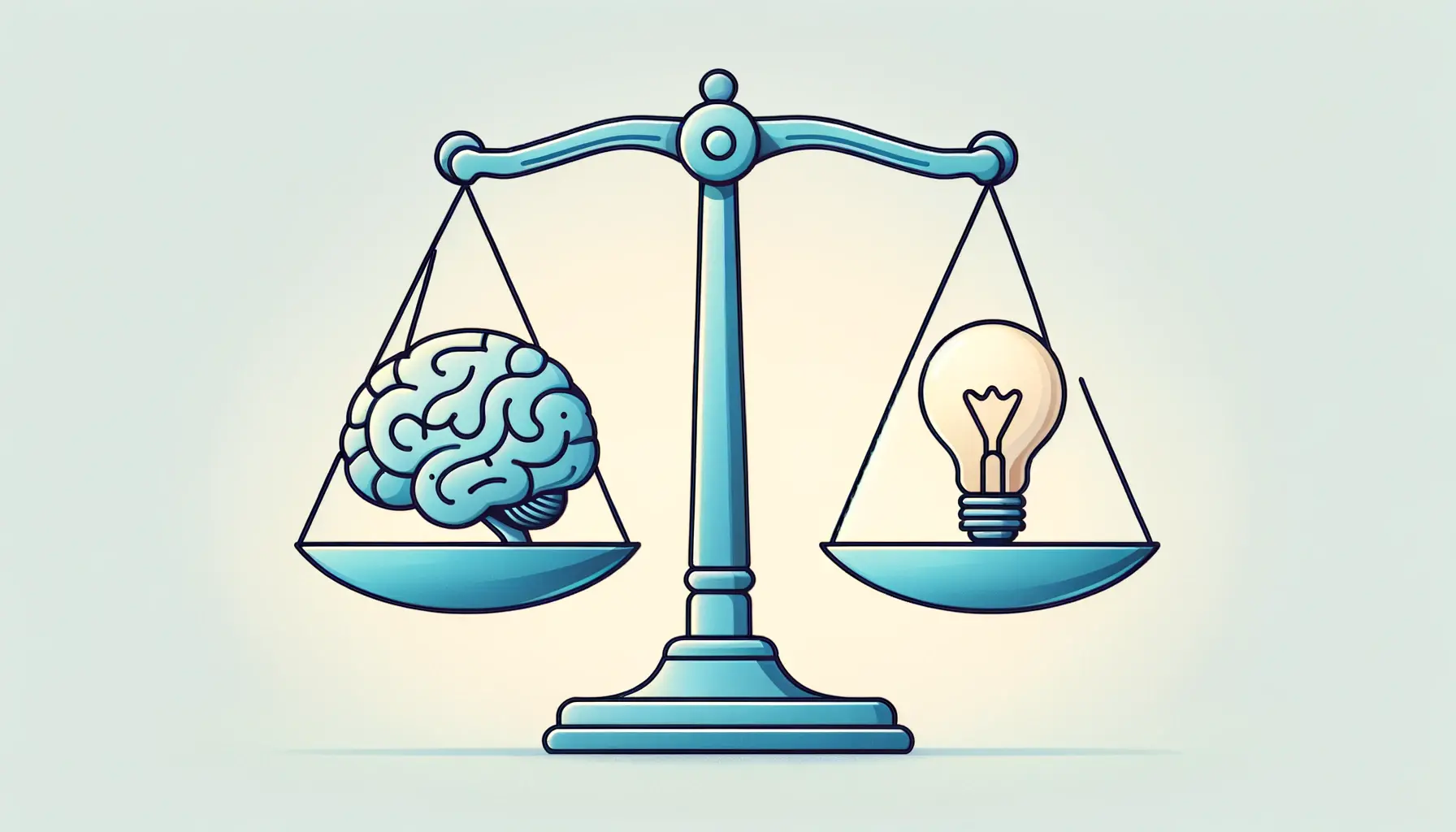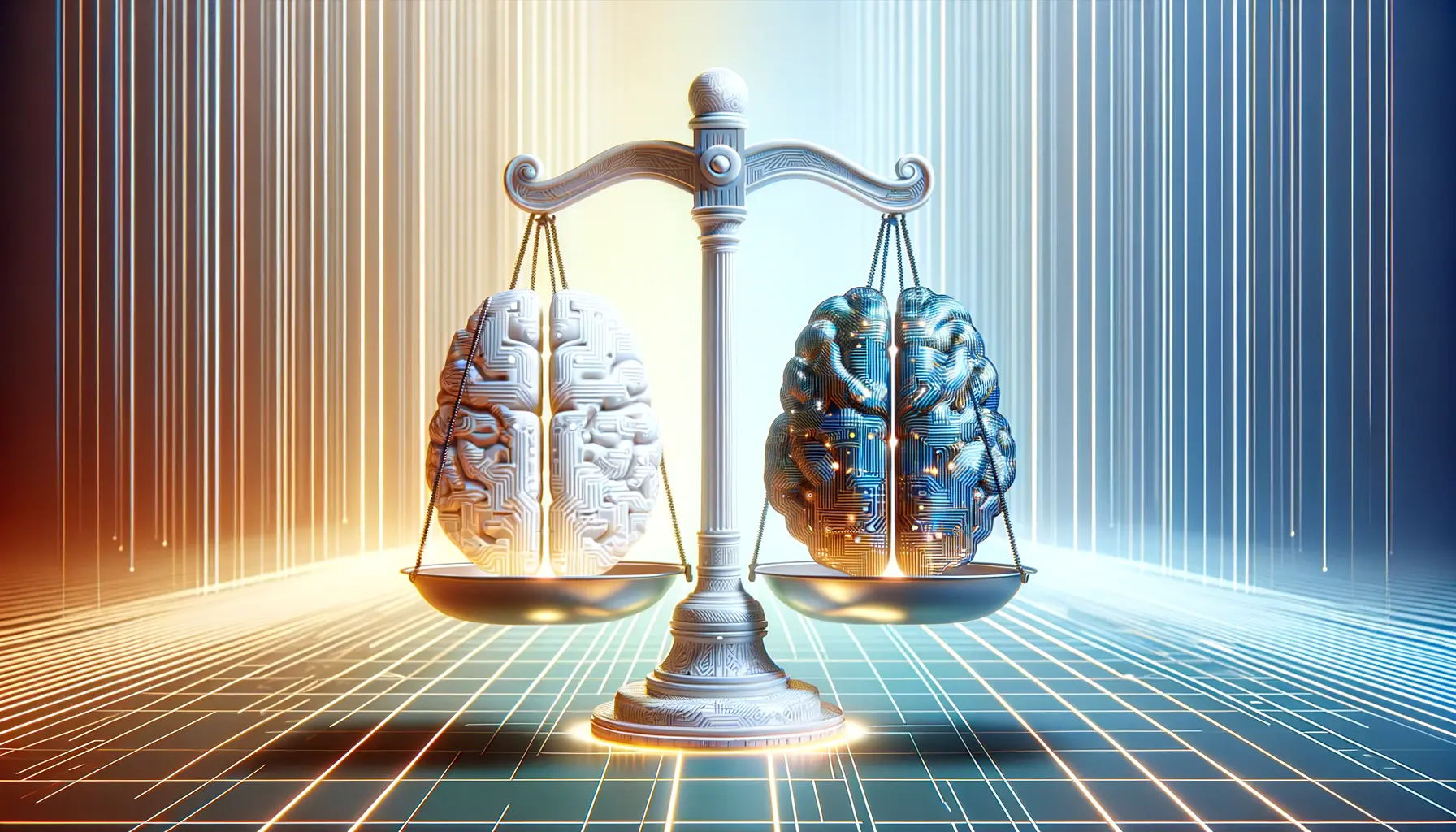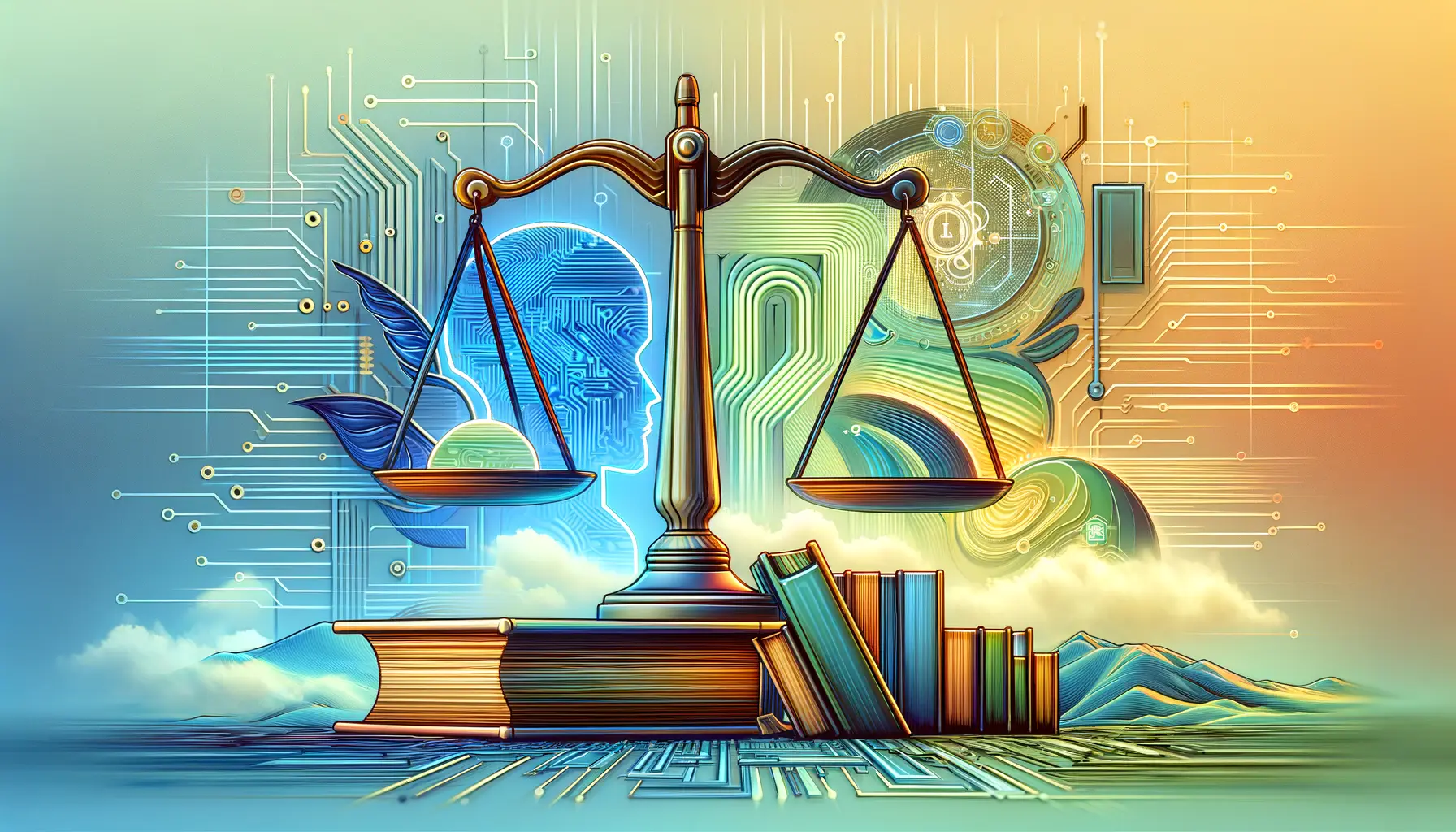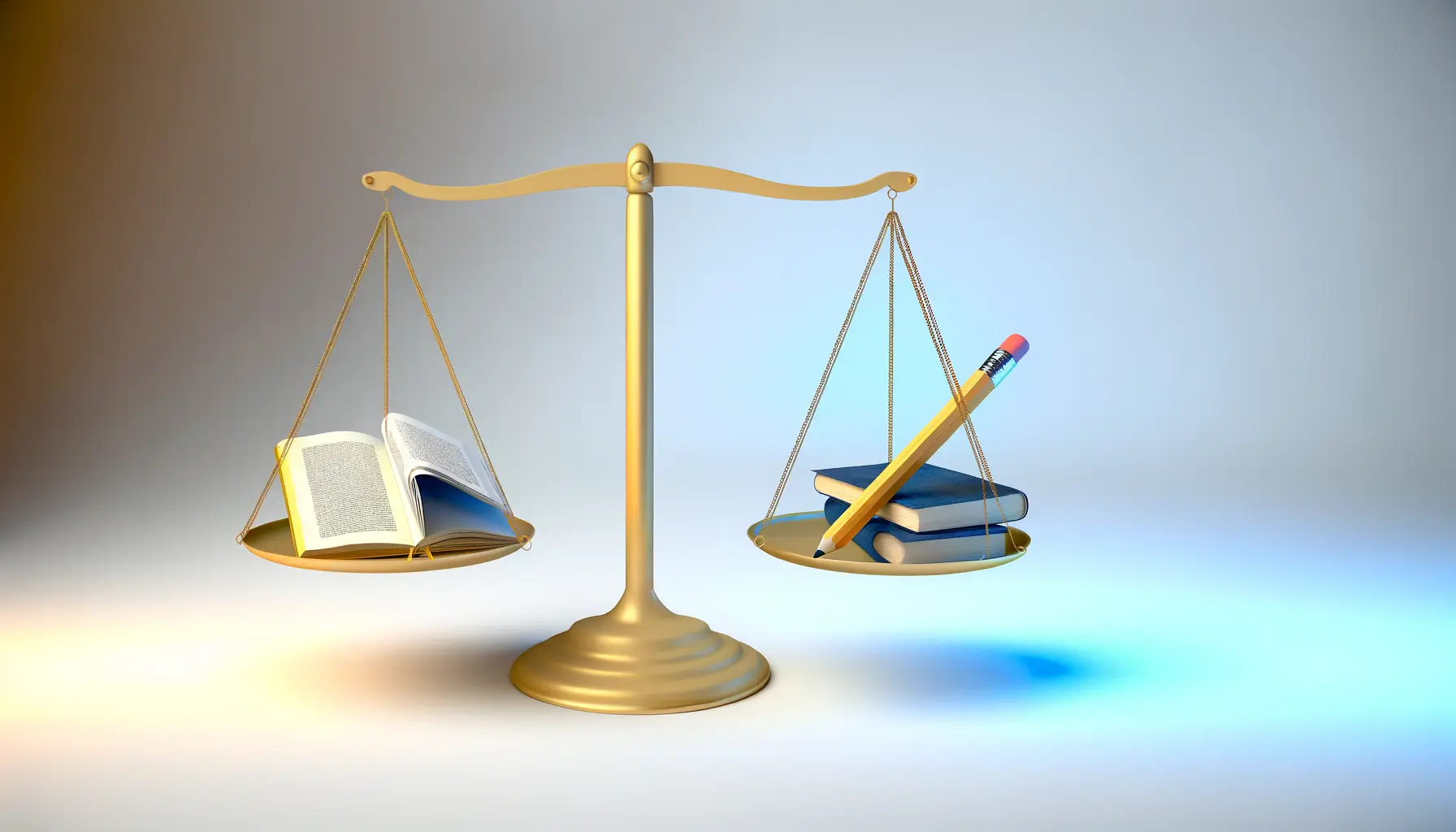The advent of DALL-E, an artificial intelligence program developed by OpenAI that generates images from textual descriptions, has sparked a significant conversation around the ethics of AI-generated content and its myriad use cases.
This technology, which stands at the intersection of creativity and computational power, raises important questions about the responsibilities of creators and users alike.
As we delve into the ethical considerations and practical applications of DALL-E, it becomes clear that this tool is not just a novelty but a significant step forward in the AI domain, offering both opportunities and challenges that merit careful examination.
The ethical landscape of DALL-E encompasses a range of concerns, from copyright and intellectual property issues to the potential for generating misleading or harmful content.
These ethical considerations are crucial in understanding how DALL-E can be used responsibly and effectively.
Meanwhile, the use cases of DALL-E extend beyond mere entertainment, touching upon sectors such as education, design, and art, where it can serve as a powerful tool for innovation and creativity.
By exploring these dimensions, we aim to provide a comprehensive overview of DALL-E’s impact on society and the ethical frameworks that should guide its use.
- Exploring the Ethical Dimensions of DALL-E
- Practical Applications of DALL-E Across Industries
- Challenges in Implementing DALL-E Technology
- Advancements in DALL-E’s Capabilities
- Integrating DALL-E into Business Strategies
- Future Directions for DALL-E and AI in Creative Fields
- Exploring the Intersection of DALL-E and Education
- Embracing the Future: The Role of DALL-E in Shaping Ethical and Creative Frontiers
- DALL-E Ethics: Frequently Asked Questions
Exploring the Ethical Dimensions of DALL-E
The Intellectual Property Conundrum
The emergence of DALL-E has reignited debates around intellectual property rights in the digital age.
At the heart of these discussions is the question of ownership for images generated by an AI based on inputs from potentially copyrighted materials.
This issue not only challenges existing legal frameworks but also prompts a reevaluation of what constitutes creativity and originality in the era of AI.
As DALL-E transforms textual descriptions into complex visuals, it blurs the lines between the creator’s intent and the machine’s interpretation, leading to a complex web of ethical and legal considerations.
Moreover, the ability of DALL-E to produce images that resemble the style of specific artists or genres raises concerns about artistic integrity and the potential for AI to dilute individual creativity.
These concerns underscore the need for clear guidelines and ethical standards that respect copyright laws while fostering innovation.
The development of such standards is crucial for ensuring that DALL-E and similar technologies serve as tools for creative expression rather than instruments of infringement.
Addressing Misuse and Harmful Content
Another critical ethical issue surrounding DALL-E is its potential for misuse in creating deceptive or harmful content.
The technology’s capacity to generate realistic images from textual prompts means that it could be used to create fake images for malicious purposes, such as spreading misinformation or creating non-consensual explicit content.
This possibility highlights the importance of implementing robust safeguards and ethical guidelines to prevent misuse and protect individuals from harm.
OpenAI has taken steps to mitigate these risks by incorporating content filters and usage policies designed to prevent the generation of inappropriate or harmful images.
However, the effectiveness of these measures in the face of evolving threats remains a topic of ongoing debate.
It is imperative for developers, users, and policymakers to engage in continuous dialogue to address these challenges and ensure that DALL-E is used in ways that promote positive outcomes and protect vulnerable populations.
Ethical considerations are at the forefront of discussions about DALL-E, highlighting the need for responsible use and robust safeguards against misuse.
Practical Applications of DALL-E Across Industries
The practical applications of DALL-E are as diverse as they are groundbreaking, stretching across various sectors from education to art, and even into more commercial realms like advertising and product design.
This versatility not only showcases the tool’s innovative capabilities but also its potential to revolutionize how we approach creativity and problem-solving in different industries.
Below, we explore some of the key areas where DALL-E is making an impact, illustrating the breadth of its use cases and the transformative potential it holds.
Revolutionizing Creative Industries
In the realm of art and design, DALL-E is opening new avenues for creators by enabling the generation of unique visuals from simple text descriptions.
This capability allows artists and designers to experiment with new concepts and ideas at an unprecedented pace, significantly reducing the time from ideation to visualization.
For instance:
- Graphic designers are using DALL-E to generate initial concepts and mockups, streamlining the creative process.
- Illustrators are exploring new styles and themes by inputting diverse textual prompts to see how the AI interprets them.
Moreover, in the advertising industry, DALL-E’s ability to produce high-quality images quickly and efficiently is being leveraged to create compelling visual campaigns that can be tailored to specific audiences or themes with minimal effort.
Enhancing Educational Tools and Resources
Educational content creators are finding DALL-E to be a valuable asset in developing engaging learning materials.
By generating vivid illustrations and diagrams based on textual descriptions, educators can create more immersive and visually appealing educational resources.
Examples include:
- Creating custom illustrations for textbooks and online courses that precisely match the content being taught.
- Generating visual aids for complex concepts, making them easier for students to understand.
This use of DALL-E not only enriches the learning experience but also opens up new possibilities for personalized education, where content can be tailored to the unique needs and interests of each learner.
DALL-E’s application in education demonstrates its potential to transform traditional learning environments into more engaging and customized experiences.
Challenges in Implementing DALL-E Technology
While DALL-E presents a myriad of opportunities for innovation and creativity, its implementation is not without challenges.
These hurdles range from technical limitations to ethical dilemmas, each requiring careful consideration and strategic solutions.
Understanding these challenges is crucial for maximizing the benefits of DALL-E while minimizing potential drawbacks.
One of the primary technical challenges involves the accuracy and relevance of the images generated by DALL-E.
Despite its advanced capabilities, the AI sometimes produces outputs that are not entirely aligned with the user’s intent or expectations.
This discrepancy can stem from ambiguous prompts or the AI’s current inability to fully grasp complex human concepts and contexts.
Technical Limitations and Data Bias
Another significant challenge is the issue of data bias, which can lead to the generation of stereotypical or culturally insensitive content.
Since DALL-E learns from vast datasets of existing images, it can inadvertently perpetuate biases present in those datasets.
Addressing this requires ongoing efforts to diversify training data and refine the AI’s algorithms to ensure fair and unbiased outputs.
- Efforts to mitigate data bias include curating more inclusive and diverse datasets.
- Developing more sophisticated algorithms capable of detecting and correcting biases.
Ethical and Societal Implications
Beyond technical issues, the deployment of DALL-E also raises ethical and societal concerns.
The potential for misuse in creating misleading or harmful content, as mentioned earlier, remains a significant challenge.
Additionally, there are worries about the impact of AI-generated content on employment in creative industries, with fears that automation could displace human artists and designers.
- Creating ethical guidelines and usage policies to prevent misuse and ensure responsible use of DALL-E.
- Engaging in dialogue with stakeholders across creative industries to explore the implications of AI on employment and creativity.
Despite its challenges, DALL-E’s potential for positive impact is immense, provided these hurdles are addressed through collaborative efforts between developers, users, and policymakers.
Advancements in DALL-E’s Capabilities
The evolution of DALL-E since its inception showcases a trajectory of significant advancements in artificial intelligence and machine learning.
These improvements not only enhance the quality and relevance of the images it generates but also expand the range of possible applications for this technology.
As we delve into the latest developments in DALL-E’s capabilities, it becomes evident that the boundaries of AI-generated content are continually being pushed forward.
One of the most notable advancements in DALL-E’s technology is the improvement in image resolution and detail.
Early versions of DALL-E were impressive in their ability to conceptualize images from text descriptions, but often the resulting images lacked the resolution necessary for professional use.
Recent updates have dramatically increased the fidelity of images, making them suitable for a wider range of applications, from high-quality print materials to digital marketing assets.
Enhanced Understanding of Context and Nuance
Another significant development is DALL-E’s enhanced ability to understand context and nuance in text prompts.
This improvement means that DALL-E can now generate images that more accurately reflect the subtleties and complexities of the prompts it receives.
For example:
- When given a prompt that includes emotional or thematic elements, DALL-E can produce images that capture the intended mood or message more effectively.
- It can recognize and apply artistic styles or historical contexts to its creations, offering users a greater degree of creative control.
Reducing Bias and Increasing Diversity
Efforts to reduce bias and increase the diversity of generated images represent another area of progress.
By refining the datasets used to train DALL-E and implementing more sophisticated algorithms, developers are working to ensure that the images produced are more inclusive and representative of global diversity.
This includes:
- Improving the representation of different cultures, ethnicities, and genders in generated images.
- Addressing and mitigating biases in the AI’s learning process to prevent the perpetuation of stereotypes.
The advancements in DALL-E’s capabilities reflect the ongoing commitment to improving the technology’s performance, ethical standards, and societal impact.
Integrating DALL-E into Business Strategies
The integration of DALL-E into business strategies represents a forward-thinking approach to leveraging AI for competitive advantage.
Companies across various industries are beginning to recognize the potential of DALL-E to revolutionize their creative processes, marketing efforts, and product development.
This section explores how businesses are utilizing DALL-E to innovate and stay ahead in the digital age.
One of the key areas where DALL-E is making a significant impact is in content creation for marketing and advertising.
By generating unique and compelling visuals, businesses can capture the attention of their target audience more effectively than ever before.
This capability allows for the rapid production of a wide range of marketing materials, from social media posts to advertising banners, tailored to specific campaigns or customer segments.
Enhancing Product Design and Development
In the realm of product design and development, DALL-E is being used to visualize product concepts and prototypes in a fraction of the time it would traditionally take.
This accelerates the design process, enabling companies to iterate more quickly and bring products to market faster.
Examples of application include:
- Generating visual concepts for new products based on textual descriptions, facilitating early-stage design discussions.
- Creating detailed renderings of product prototypes for evaluation and refinement before physical prototypes are manufactured.
Personalizing Customer Experiences
Another innovative application of DALL-E is in personalizing customer experiences.
By generating customized visuals in real-time, businesses can offer personalized products, services, and marketing messages that resonate with individual customers.
This level of personalization enhances customer engagement and loyalty, driving sales and brand differentiation.
Applications include:
- Customizing marketing materials to reflect individual customer preferences or past behaviors.
- Offering personalized product recommendations with custom-generated images that match the customer’s style or needs.
DALL-E’s integration into business strategies underscores the transformative potential of AI in enhancing creativity, efficiency, and personalization in the corporate world.
Future Directions for DALL-E and AI in Creative Fields
The rapid advancements in DALL-E and similar AI technologies signal a promising future for their application in creative fields.
As these tools become more sophisticated and accessible, they are poised to further transform industries, redefine creative roles, and open up new possibilities for innovation.
This section explores potential future directions for DALL-E and its impact on the creative landscape.
One of the most exciting prospects is the continued evolution of AI’s ability to collaborate with humans in the creative process.
As DALL-E becomes better at understanding and interpreting human input, it could serve as a co-creator, offering suggestions and generating ideas that complement and enhance human creativity.
This partnership could lead to the development of new art forms and creative expressions that were previously unimaginable.
Expanding Accessibility and Democratizing Creativity
Another significant development is the potential for DALL-E to democratize creativity by making powerful creative tools accessible to a wider audience.
With intuitive interfaces and the ability to generate complex visuals from simple text prompts, DALL-E lowers the barrier to entry for creative expression.
This accessibility could empower individuals without traditional artistic training to bring their ideas to life, fostering a more inclusive creative community.
Examples of democratizing creativity include:
- Enabling small businesses and entrepreneurs to create high-quality marketing materials without the need for a professional designer.
- Allowing educators and students to generate custom illustrations for educational content, enhancing learning experiences.
Addressing Ethical Considerations and Societal Impact
As DALL-E and similar technologies advance, addressing the ethical considerations and societal impact of AI-generated content will become increasingly important.
This includes ensuring that AI respects copyright and intellectual property rights, prevents the creation of harmful or misleading content, and promotes diversity and inclusion.
Future developments in DALL-E will likely include more sophisticated mechanisms for addressing these concerns, such as improved content filters and ethical guidelines for use.
- Implementing advanced content moderation tools to automatically detect and prevent the generation of inappropriate or harmful images.
- Continuing efforts to diversify training datasets and refine algorithms to reduce bias and promote inclusivity in AI-generated content.
The future of DALL-E and AI in creative fields is not just about technological advancements but also about navigating the ethical and societal implications of these innovations.
Exploring the Intersection of DALL-E and Education
The intersection of DALL-E and education presents a fertile ground for innovation, offering new ways to engage students and enhance learning experiences.
As educators and institutions begin to explore the capabilities of DALL-E, the potential for this technology to transform educational content and methodologies becomes increasingly apparent.
This exploration is not just about leveraging AI for creating visual aids but also about integrating these advancements into the curriculum to foster a deeper understanding and creativity among students.
One of the key benefits of incorporating DALL-E into educational settings is the ability to create customized learning materials that cater to the diverse needs of students.
By generating images and illustrations that align with specific learning objectives, educators can make abstract concepts more tangible and accessible.
This personalized approach can significantly enhance student engagement and comprehension, making learning a more interactive and immersive experience.
Facilitating Creative Learning Environments
DALL-E can also play a crucial role in facilitating creative learning environments.
By providing students with the tools to generate their own visual content, it encourages experimentation and exploration, key components of the creative learning process.
This hands-on experience with AI and creative technology not only stimulates creativity but also equips students with valuable skills for the future.
Applications in creative learning include:
- Art and design projects where students use DALL-E to bring their creative visions to life.
- Science and history lessons where custom illustrations are generated to depict complex processes or historical events.
Challenges and Considerations in Educational Integration
Despite the promising applications of DALL-E in education, there are challenges and considerations that must be addressed.
These include ensuring equitable access to technology, protecting student privacy, and navigating the ethical use of AI-generated content.
Educators and institutions must carefully consider these factors to fully leverage DALL-E’s potential in a responsible and effective manner.
Strategies for addressing these challenges include:
- Developing policies and guidelines that ensure the ethical use of DALL-E in educational settings.
- Providing training and resources for educators to integrate DALL-E into their teaching methodologies effectively.
The integration of DALL-E into education represents a significant opportunity to enhance learning experiences and foster creativity among students, provided that challenges are addressed thoughtfully.
Embracing the Future: The Role of DALL-E in Shaping Ethical and Creative Frontiers
The exploration of DALL-E’s ethics and use cases throughout this article underscores the profound impact that AI technologies are having on creative fields, education, and business strategies.
As we stand on the brink of a new era in artificial intelligence, it is clear that tools like DALL-E are not only expanding the boundaries of creativity and innovation but are also prompting a reevaluation of ethical standards in the digital age.
The journey of integrating DALL-E into various sectors reveals both the immense potential and the challenges that come with such advanced technology.
Charting the Path Forward
The ethical considerations surrounding DALL-E, from intellectual property rights to the prevention of misuse, highlight the need for ongoing dialogue and the development of robust frameworks that guide the responsible use of AI.
As DALL-E continues to evolve, so too must our approaches to addressing these ethical dilemmas, ensuring that the technology enhances human creativity without compromising moral values or societal norms.
Unlocking Creative Potential Across Industries
The diverse applications of DALL-E across creative industries, education, and business illustrate the tool’s versatility and its capacity to revolutionize traditional processes.
By enabling the rapid generation of high-quality, customized visual content, DALL-E offers a glimpse into a future where creativity is democratized and accessible to all.
This shift not only fosters innovation but also empowers individuals and organizations to communicate more effectively and engage with their audiences in new and meaningful ways.
Navigating Challenges and Embracing Opportunities
Despite the excitement surrounding DALL-E’s capabilities, the challenges of data bias, ethical use, and the integration of AI into existing systems remain significant.
Addressing these challenges requires a concerted effort from developers, users, and policymakers alike.
By working together to refine the technology and its applications, we can harness the full potential of DALL-E while mitigating risks and ensuring a positive impact on society.
- The advancement of DALL-E’s capabilities, including improved image resolution and understanding of context, opens up new possibilities for creative expression and problem-solving.
- The integration of DALL-E into business strategies and educational frameworks demonstrates the broad applicability and transformative potential of AI in enhancing efficiency, personalization, and learning outcomes.
- The future directions for DALL-E and AI in creative fields promise a landscape where human creativity is augmented by artificial intelligence, leading to unprecedented forms of art, design, and communication.
In conclusion, the exploration of DALL-E’s ethics and use cases offers valuable insights into the evolving relationship between artificial intelligence and human creativity.
As we navigate the complexities of this relationship, it is imperative that we prioritize ethical considerations and strive for inclusivity and fairness.
By doing so, we can ensure that technologies like DALL-E not only advance our creative capabilities but also enrich our society in ethical and meaningful ways.
DALL-E Ethics: Frequently Asked Questions
Explore the ethical landscape of AI-generated art with our curated FAQs on DALL-E’s ethics, addressing common inquiries and concerns.
AI art raises questions about originality, copyright, and the impact on human artists, challenging traditional notions of creativity and ownership.
Using others’ artwork without consent for AI training can infringe on copyright laws and ethical standards, necessitating respect for original creators.
DALL-E incorporates mechanisms to respect copyright, focusing on generating original content while navigating the complexities of intellectual property rights.
While DALL-E has potential for misuse, content filters and ethical guidelines are in place to prevent the creation of misleading or harmful images.
Efforts to reduce bias include diversifying training datasets and refining algorithms, aiming for fair and unbiased AI-generated content.
While DALL-E automates some creative tasks, it also opens new opportunities for collaboration and innovation, complementing human creativity.
Yes, ethical guidelines and content policies are established to guide the responsible use of DALL-E, ensuring it serves as a tool for positive creation.
Future ethical considerations include navigating evolving copyright laws, ensuring equitable access, and continuously addressing bias and fairness in AI-generated content.










